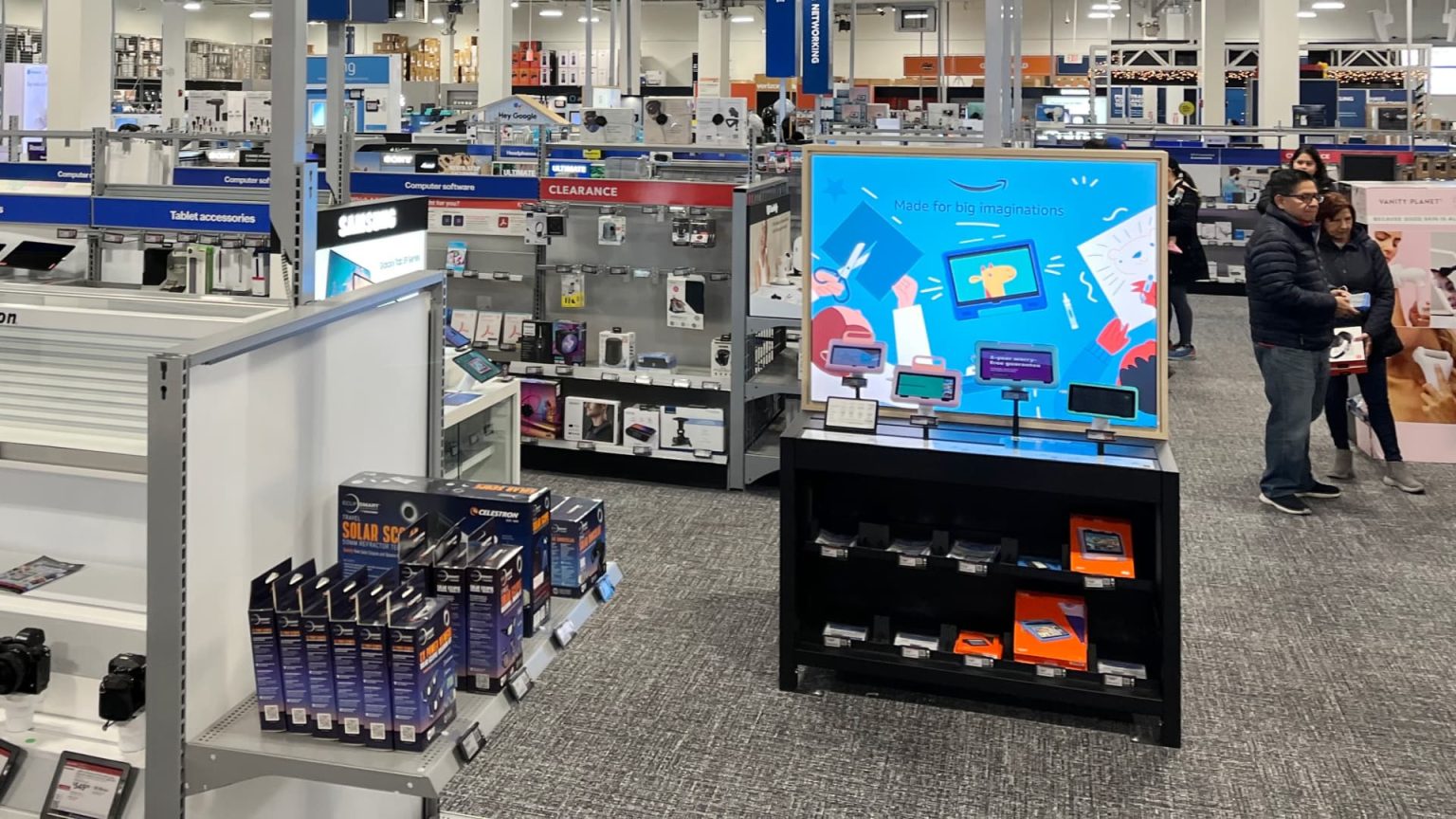We are initiating a position in Best Buy, buying 400 shares at $82.30 each. Following the trade, BBY’s weighting in Jim Cramer’s Charitable Trust will be 1%. Consumer electronics retailer Best Buy navigated a challenging operating environment over the past couple of years, dealing with headwinds like slowing demand for computers, TVs, and appliances coming out of the pandemic, as well as a shift in consumer spending patterns from goods to services such as dining out, travel, and experiences. These headwinds, along with other general macroeconomic factors like high inflation, have caused Best Buy to deliver nine straight quarters of negative comparable sales, resulting in a stock price that has fallen from its high in the $130s in November 2021 to around $80 today. These sluggish trends are expected to continue this year, with management guiding comparable sales down 3% to flat. But are better times ahead? Management thinks so. They’ve given five reasons why they are optimistic about the future. 1. The installed base is bigger as households now have twice as many connected devices as they did before the pandemic. 2. Technology products are increasingly being viewed as a functional need and not “an emotional want.” 3. Consumer electronics historically needed to be upgraded and replaced every three to seven years, meaning many of the products that were purchased in the Covid era will need to be replaced soon. 4. The pace of innovation is finally normalizing after a pause at the beginning of the pandemic. Innovation tends to drive new upgrades and replacements of electronics while also creating new categories. 5. Structural innovations in areas like the cloud, AR, and electrification of homes will continue to drive demand. Let’s talk about the third and fourth points because they go hand in hand with what is about to happen in the computing industry. The cycle finally appears to be on the verge of a turn. Notebook units turned positive in the fourth quarter, and finally, innovation should compel people to buy a new laptop. Microsoft is releasing its first AI-powered Pro 10 and laptops which feature a special Copilot key that makes accessing generative AI experiences fast and easy. These are the first of what will be many AI machines. Some are calling this the biggest change to the computer keyboard in decades, giving people plenty of a reason to upgrade. But the innovations don’t end there. For the first time in years, Best Buy was excited with some of the new technologies unveiled at the annual Consumer Electronics Show in Vegas, and it has started to show up in their stores. The company is seeing heightened interest in Samsung’s AI-enabled phones, VR/AR devices, Ray-Ban smart glasses, Bose open-ear headphones, electric vehicle charging stations, and even 98-inch TVs. Those massive TVs aren’t right for everyone, but the company has said TV units have recently turned positive too. After nine straight quarters of declining comps, it’s clear that analysts are trying to get ahead of the coming inflection. The stock has been upgraded twice in the past week, first by Telsey Advisory Group, which raised to outperform with a $95 price target, and then by JPMorgan, which moved to overweight with a price target of $101. JPMorgan said the stock could be “spring loaded” on any sign that sales return to growth. While that may not happen right away, the firm said it makes sense to be one or two quarters early due to reasonable margin expectations and the computing upcycle starting as soon as the back-to-school season. JPMorgan also thinks the stock’s cheap valuation provides support as well. They point out that Best Buy is one of the last broad-line and hard-line retail stocks in its coverage that experienced a Covid pull-forward that hasn’t returned to its historical valuation. The stock is inexpensive, trading at roughly 13.5 times the roughly $6 per share analysts expect the company to earn this fiscal year. Lastly, Best Buy sports an attractive dividend yield of about 4.65%. A yield that high for a retailer sometimes can be a red flag, but the company just increased the quarterly payment by 2 cents per share. That marks eleven consecutive years of regular quarterly dividend raises, which should be taken as a sign of confidence. The big yield pays us as we wait for comparable sales to return to growth and margins to improve. Also, it will look even more attractive when the Federal Reserve starts lowering interest rates. We are initiating the position with a price target of $95. (See here for a full list of the stocks in Jim Cramer’s Charitable Trust is long.) As a subscriber to the CNBC Investing Club with Jim Cramer, you will receive a trade alert before Jim makes a trade. Jim waits 45 minutes after sending a trade alert before buying or selling a stock in his charitable trust’s portfolio. If Jim has talked about a stock on CNBC TV, he waits 72 hours after issuing the trade alert before executing the trade. THE ABOVE INVESTING CLUB INFORMATION IS SUBJECT TO OUR TERMS AND CONDITIONS AND PRIVACY POLICY , TOGETHER WITH OUR DISCLAIMER . NO FIDUCIARY OBLIGATION OR DUTY EXISTS, OR IS CREATED, BY VIRTUE OF YOUR RECEIPT OF ANY INFORMATION PROVIDED IN CONNECTION WITH THE INVESTING CLUB. NO SPECIFIC OUTCOME OR PROFIT IS GUARANTEED.
Read the full article here





